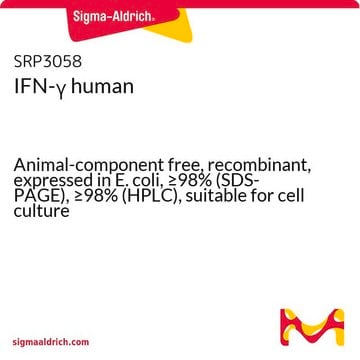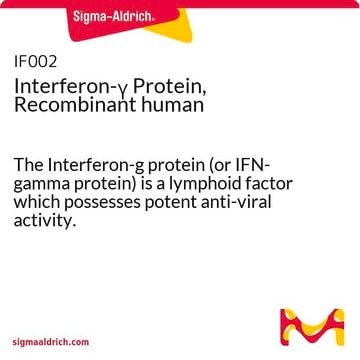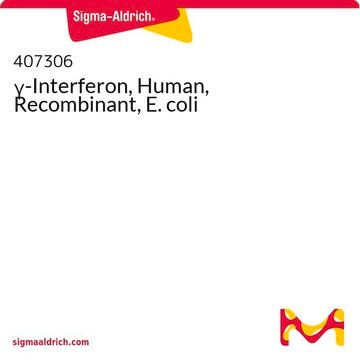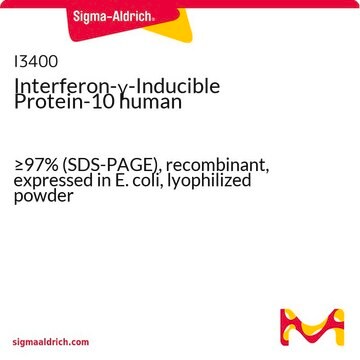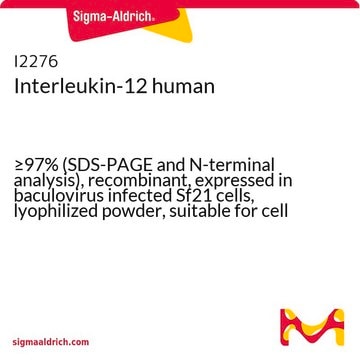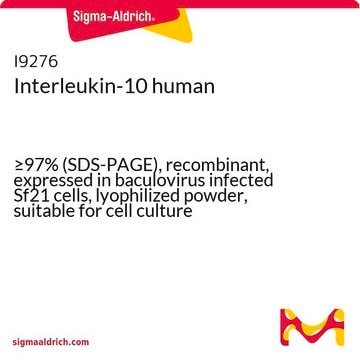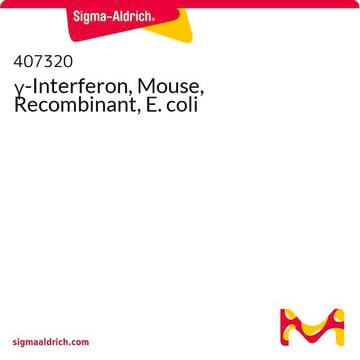I3265
Interferon-γ human
recombinant, expressed in E. coli, ≥98% (SDS-PAGE), lyophilized powder, suitable for cell culture
Synonym(s):
IFN-γ
About This Item
Recommended Products
biological source
human
Quality Level
recombinant
expressed in E. coli
Assay
≥98% (SDS-PAGE)
form
lyophilized powder
mol wt
~17 kDa
packaging
pkg of 0.1 mg
technique(s)
cell culture | mammalian: suitable
impurities
≤1 EU/μg endotoxin
color
white
solubility
water: soluble 1.000 mL, clear, colorless
UniProt accession no.
storage temp.
−20°C
Gene Information
human ... IFNG(3458)
Looking for similar products? Visit Product Comparison Guide
Application
- to study the effect of interferon-γ on cultured trophoblasts in absence and presence of fibronectin
- to analyse factors which participate in the production of antibody microarrays on glass support
- for ELISA (enzyme-linked immunosorbent assay) method to understand the effect of interferon-γ in human gingival fibroblasts in presence of bacterial challenge
Biochem/physiol Actions
Physical form
Analysis Note
related product
Storage Class Code
11 - Combustible Solids
WGK
WGK 3
Flash Point(F)
Not applicable
Flash Point(C)
Not applicable
Personal Protective Equipment
Certificates of Analysis (COA)
Search for Certificates of Analysis (COA) by entering the products Lot/Batch Number. Lot and Batch Numbers can be found on a product’s label following the words ‘Lot’ or ‘Batch’.
Already Own This Product?
Find documentation for the products that you have recently purchased in the Document Library.
Customers Also Viewed
Our team of scientists has experience in all areas of research including Life Science, Material Science, Chemical Synthesis, Chromatography, Analytical and many others.
Contact Technical Service

